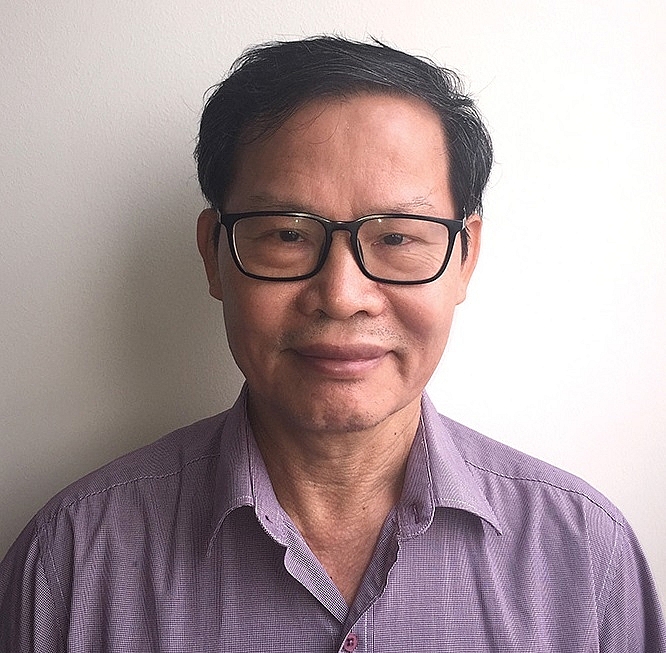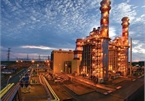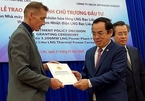 |
|
Nguyen Thanh Ha, lawyer of Vietbid Consulting Co., Ltd.
|
Despite having an advantage of environmental protection, LNG has been a luxurious energy solution because it depends much on high, fluctuating oil prices, sophisticated transport infrastructure, and ports and warehouses, as well as complicated re-gasification, thus requiring huge investment.
However, with recent changes in the world’s energy picture and a downtrend in oil prices, the LNG price has seen many downward changes towards being more affordable, stable, and independent with oil prices.
Many years ago, the Vietnamese government passed a masterplan for the country’s gas development until 2025 with a vision towards 2035 which requires government agencies to study and find potential markets, and strengthen infrastructure development for LNG imports with the volume of one to four billion cubic metres a year during 2021-2025, and from six to 10 billion cu.m during 2026-2035.
The Politburo’s recently-enacted Resolution No.55-NQ/TW on the orientation of the National Energy Development Strategy of Vietnam to 2030, with a vision to 2045, which also placed a stress on LNG development strategy prioritising investment in technical infrastructure development for imports and consumption of LNG. Specifically, the resolution touches on developing infrastructure to be able to import 8 billion cu.m of LNG annually by 2030, and around 15 billion cu.m by 2045.
In spite of having these plans for years, Vietnam has so far not developed any related projects. One of the reasons for this is that the country had no urgent demand for LNG import over past years, as the country’s energy sources of on local hydropower, and coal and natural gas were still sufficient.
Now the country’s exploration and exploitation of sources of sizeable hydropower and coal apparently has reached off limits so that it is impossible to have new large capacity of hydropower and coal-fired power. In the meantime, the existing supply of natural gas has tended to decline significantly, while no new significant sources are discovered.
Therefore, the country’s local supplies will hardly meet local demand in the coming time. Moreover, even if the country wants to import coal for coal-fired power generation, it will be increasingly infeasible because many countries in the world, especially developed nations from the Organisation for Economic Co-operation and Development, have policies to limit or even ban loans for development of related ventures. As a result, LNG import will be an inevitable solution for Vietnam’s energy in the future.
In the last two or three years, there has been a wave of proposals for the development of gas-to-power projects from domestic and foreign investors. Among international financiers, such groups range from powerful LNG traders and leading equipment manufacturers to newly-founded companies. In particular, in the first group of LNG traders, many famous names included JERA of Japan and South Korea’s Kogas. JERA, in particular, annually trades about 40 million tonnes of LNG, accounting for over 30 per cent of LNG trading volume globally.
The second group are of the world’s leaders in LNG exploitation and supply, for example ExonMobil (US), Shell (UK), Gazprom (Russia), and Woodside (Australia). The third group includes leading manufacturers of equipment such as GE (US), Siemens (Germany), and construction and engineering companies like GS and Daewoo (South Korea).
The fourth group are power companies, including Kepco of South Korea and B.Grimm of Thailand, among others. The fifth group includes organisations who represent investment funds such as Americans Gen X and VinaCapital. The final batch has involvement of newly-established smaller companies whose founders are experts, consultants, and entrepreneurs such as ECV and Singapore’s Delta Offshore Energy Pte., Ltd. (DOE), aiming to develop and obtain approval of the projects and then call for investment from other firms, including those in the aforementioned groups.
In fact, this last group has some advantages such as their high flexibility in project development. Probably partly because of this advantage, the first LNG scheme licensed by the government – the Bac Lieu LNG initiative – is developed by one of the companies in this group. Worth approximately $4 billion, it is the biggest foreign direct investment scheme in the Mekong Delta region, invested by DOE.
Thus far, these groups have submitted many LNG initiatives, with the location focusing in central coastal and southern regions such as Thi Vai, Long Son, Ca Na, Ke Ga, and Van Phong. According to initial statistics, total capacity of mixed gas turbine power plants using imported LNG being proposed in the central and southern regions reaches over 40,000MW, which will push annual demand for LNG imports to 30 million tonnes.
This figure surpasses the targets set in the master plan and Resolution 55. Many experts said that the actual development of LNG may be much bigger than the country’s strategies and plans, which might happen in a similar fashion with solar power in recent years.
However, solar power projects are generally small-scale with capacity of several dozens of MW and investment capital of less than several hundreds of million US dollars, and are invested by domestic companies, thus possibly accessing loans from local banks with easier lending conditions. Conversely, most LNG initiatives have a much bigger scale, capacity, and investment capital, and are likely to be financed largely by international banks with stricter requirements and conditions.
Instead of developing specific mechanisms for each venture as it does at present for the Son My and Nhon Trach projects, the government needs to have general policies and regulations for all such schemes in the industry, especially in regard to the issues of the “take or pay” mechanism, the “pass through” of fuel prices, and others.
On the other hand, the synchrony between gas sales agreements and power purchase agreements with Electricity of Vietnam (EVN) is a critical issue for developers in the context that gas sales contracts face much instability in the global market, while power sales to EVN is increasingly following the auction mechanism of the competitive power generation market.
There remains hope that some LNG to power projects will be developed and constructed soon, making them a foundation to build and complete legal frameworks for the country’s new energy industry in the future. VIR
Nguyen Thanh Ha

Investors show growing appetite for LNG power projects
A slew of sizeable liquefied natural gas-fired power projects have been in the development pipeline in the past year as a way to replenish national power sources as Vietnam turns on a greener growth path.

Bac Lieu LNG-to-power project triples January FDI inflow
The Bac Lieu LNG-to-power project marks the first billion-dollar foreign direct investment project in 2020 after a year going without projects of this magnitude, effectively tripling the first-month foreign investment inflows against last year.
 Liquefied natural gas (LNG) has been an important source of energy for countries worldwide. According to a recent Norwegian-based report, 42 countries are importing LNG to balance their local insufficiency of energy.
Liquefied natural gas (LNG) has been an important source of energy for countries worldwide. According to a recent Norwegian-based report, 42 countries are importing LNG to balance their local insufficiency of energy.